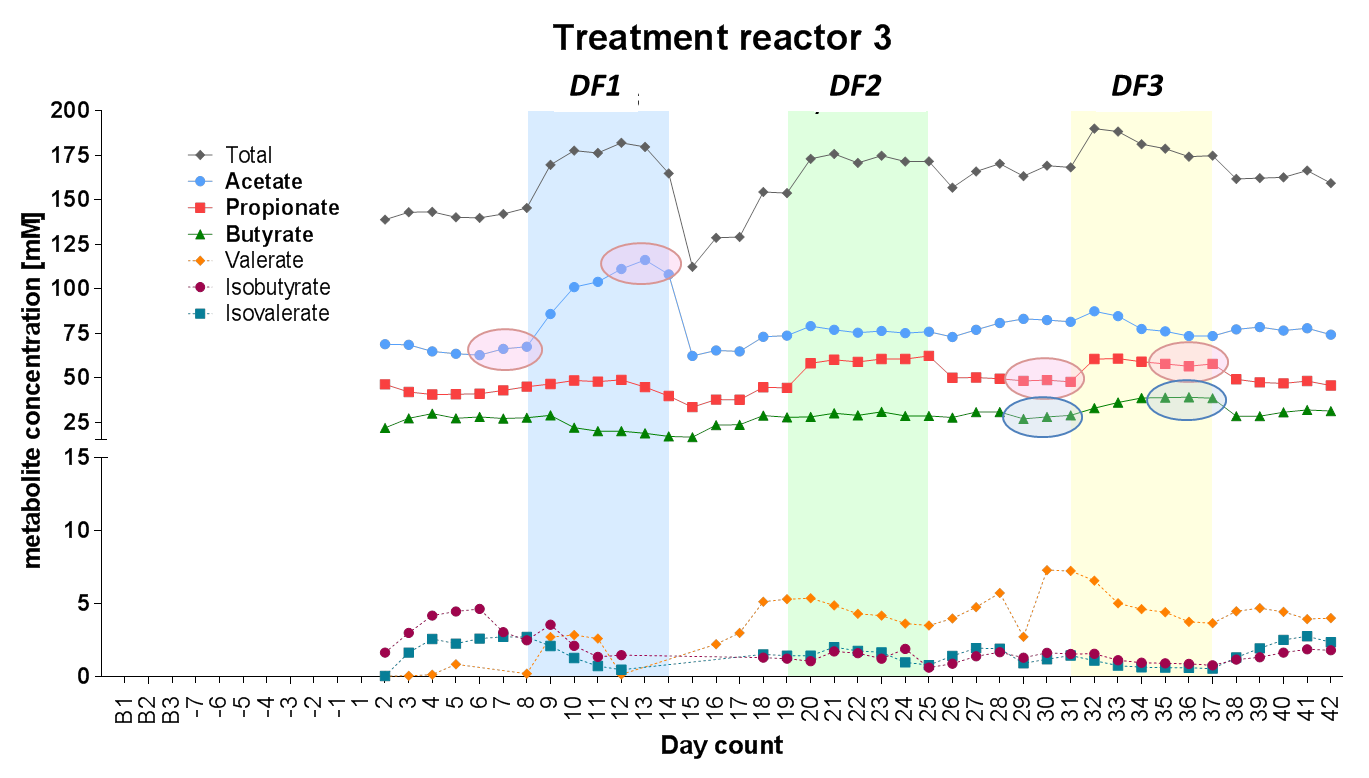Prebiotic fermentation tested in vitro colonic fermentation systems – Industry & Swiss National Science Foundation
Complex carbohydrates of plant origin have been studied for their nutritional, functional and health contributions in foods. Dietary fibers encompass a large diversity of structures of varied size and complexity. Oat b-glucans have repeatedly been shown to have beneficial effects for the host. Their water-binding properties increase volume and viscosity of the chime in the stomach and small intestine, leading to a slower gastric emptying and a lower intestinal absorption rate, therefore promoting satiety and reducing nutrient uptake. The gelling properties of oat b-glucans are further thought to decrease the glycemic index and diminish cholesterol absorption of ingested foods. Overall b-glucans result in a reduced food intake, increased insulin sensitivity and reduced cholesterol levels. In vivo studies have shown that dietary b-glucans can impact on intestinal microbiota and metabolite composition in animal models, but very few studies have been done on the human gut microbiota.
For this project, a new PolyFermS model platform is used to investigate and compare the effects of different dietary fibers, including b-glucans, fructo-oligosaccharide (FOS), a-galacto-oligosaccharide (GOS), xylo-oligosaccharides (XOS) on the composition and activity of the adult gut microbiota in models mimicking the proximal ad the distal colon. Furthermore the inflammatory potential of fermentation effluents produced in different test conditions is tested on THP-Blue™ NF-κB reporter cell line.

